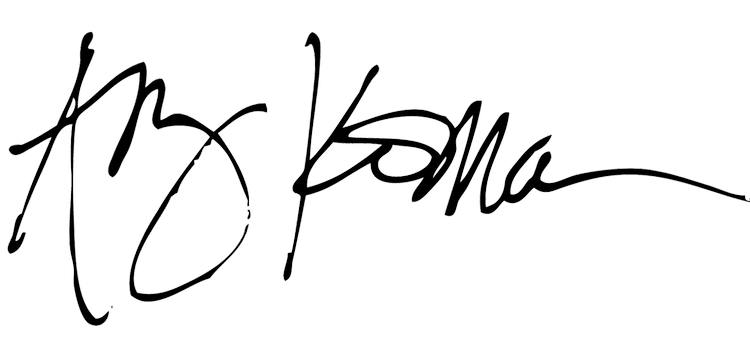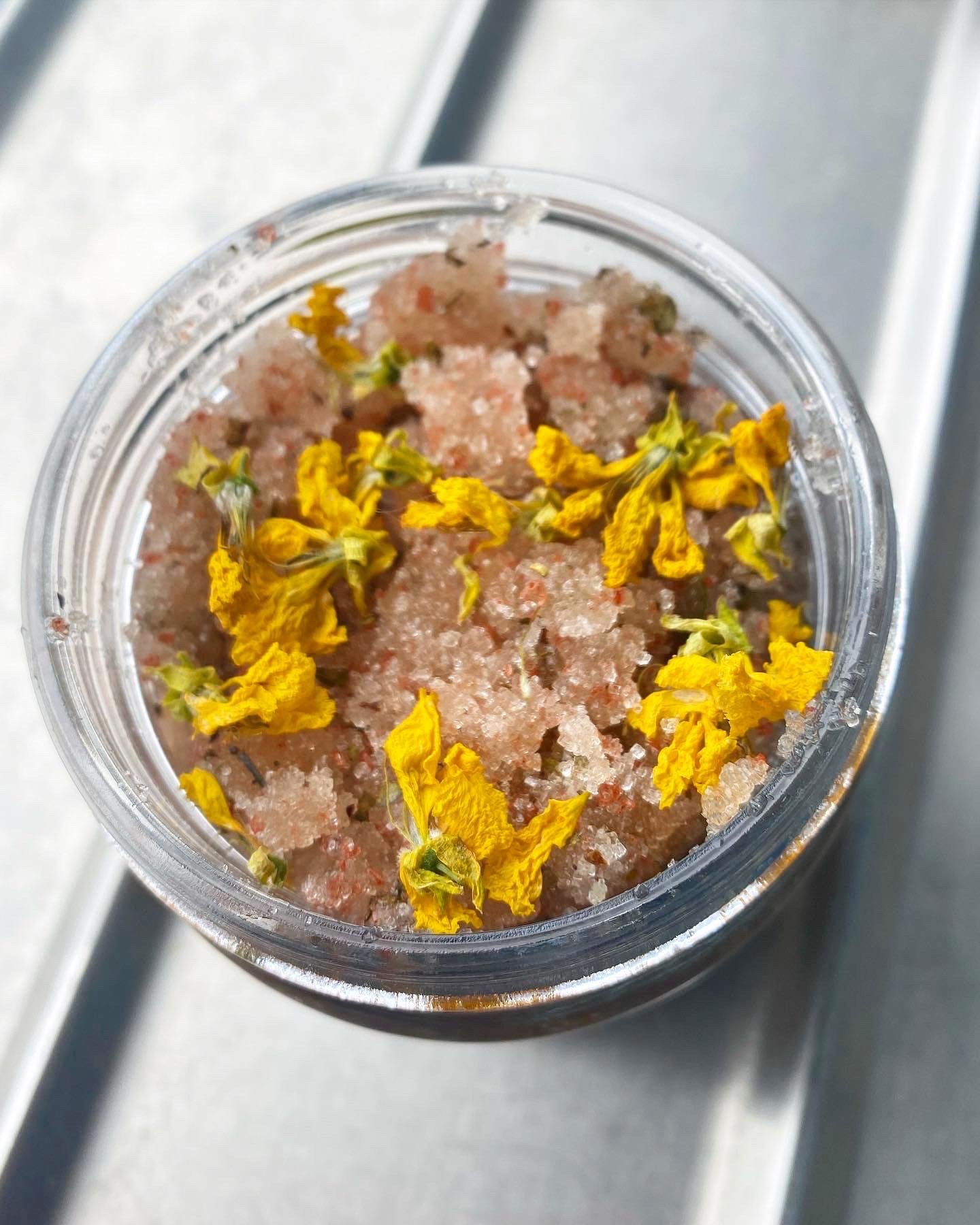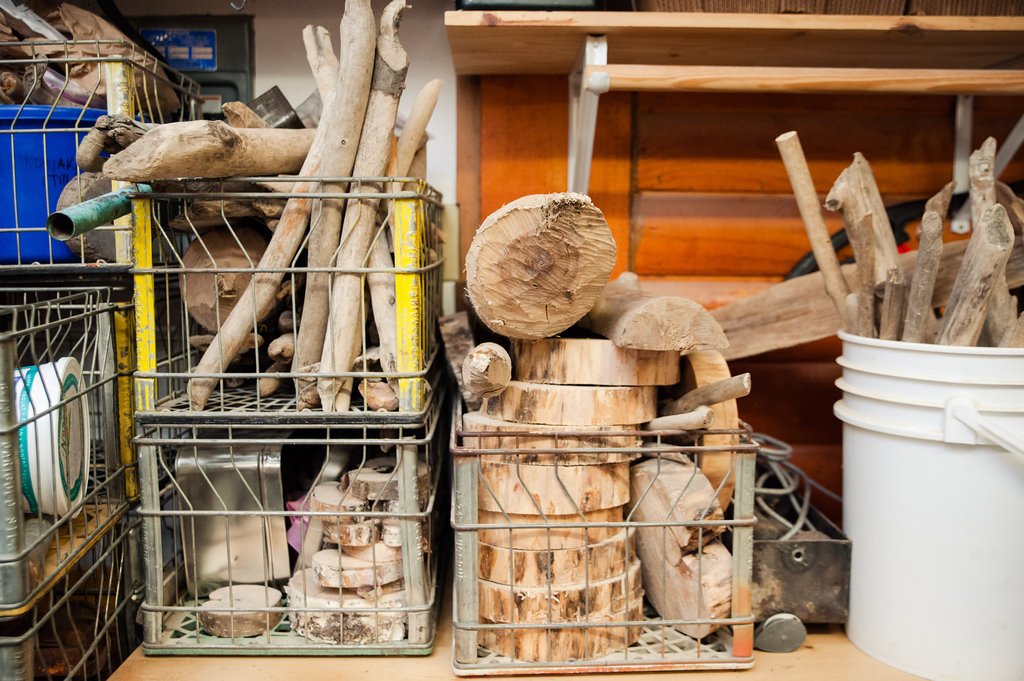new smalls
I entered my studio yesterday thinking I would work on a large canvas. After a solid 30 tinkering around, bowls and buckets of stones caught my eye. It’s been awhile since I’ve worked these tiny canvases. Appreciating the accessibility of their size and the immediacy of completing something creative in one studio sesh, I cherry picked a handful and got to work.
I’ve been reflecting (as one does and seems to do more of during the kick off month of a new year— helllooo January!) and remembering a time when I sold work on Etsy and earned my living painting stones. Life is a trip. Those small stone works were about tactile intimacy and connection. I thought of them as touchstones to the natural world and to eachother. They were about making art accessible and affordable.
Throughout this year, I will release sets of 9 stones at random on my website. Why nine? Read this. The pattern is intended as a connecting force unifying each group of stones. As part of my art practice, I will only paint these sets when I am feeling centered, calm and at peace. I believe energy imprints objects and I promise to take the utmost care in tending to mine. You can purchase one, or a few or the whole set.
A bit of the backstory to this idea: I don’t know about you, but the world feels loud and chaotic AF. I feel a sense of urgency to cultivate an environment of calm and peace inside me. Art is one of the ways I do just this. My painted stone sets are intended to be tangible and aesthetic reminder that everything and everyone is interconnected.
Visit my shop to check it out…
Purchase the latest in this series at Eight Stars Apothecary
Maiden, Mother, Lover
Maiden, Mother and Lover explore where nostalgia intersects memory. Each painting is steeped in creative acts of care for past and present versions of myself. These panels illuminate moments, people and places that trace how I’ve moved in the world…overlaps of matter and magic.
Maiden, Mother and Lover are celebrations of the ephemeral part of my being. They speak of time and timelessness, of archetypes and alchemy. Through the use of delicate layering, color to evoke emotion and repeated pattern-making, I create a personal invocation “In memory of…” all that I have been, all that I am and all that I will be.
“Maiden” | 10” x 10” | Acrylic on Claybord
“Mother” | 10” x 10” | Acrylic on Claybord
“Lover” | 10” x 10” | Acrylic on Claybord
color obsession
In Memoriam: Yolande "Sam" Fejes
The first time I walked into Alaska House Gallery it was 2001. I tagged along with a friend who was writing an article for The Daily News Miner about the recent documentary about artist Clair Fejes and the gallery run by her daughter, Yolande.
“Helllllooooo!!!” bounced down the stairs as we entered. A”hello” I would come to know and love. Sam gave me my first job in a gallery. I took it as a part time day job while waiting tables at night. She also gave me my first solo exhibit in Alaska. She taught me about art, being a business owner, how to treat people, how to love fiercely and unapologetically. She was a straight shooter and had no trouble telling me a guy I was dating “wasn’t the one” or that I needed to “ask more for my work.” She paid attention to details, had a way of making you feel like you belonged and were a part of her “framily” (friends that are family). She was a dear friend, mentor and I miss her so much.
Ron, Sam and my kids in 2018
Installing work at Alaska House Gallery | 2014
Sam meeting Lola for the first time | 2013
Acrylic on Caribou Shed | 2012 ALCHEMY | solo exhibit at Alaska House
The making of a portal
Portal | Acrylic on Glass Float | 2022
MOTHER at Bunnell Street Arts Center | December 2022
“Mother: A position, an act, a summoning, an expletive, a transition, an irreversibility.
The word conjures comfort, expectation, humility, defiance, entanglement, lineage, disappointment, rage, and bliss. The state is simultaneously verdant and mundane, a vein of generational knowledge and deep intuition tempered by unknowing and unlearning.
Mother is created from within our mothering experience, but also in response to our relationships with one another – sustenance, balm, commitment, and reckoning.
We do this work to contextualize, remember, and honor all stages of mothering. By couching our questions in reprieve and tenderness, we reinforce connections to mothers who came before, to those seen everyday, and to others who have yet to become.”
Participating artists:
Brianna Allen, Homer, AK
Carla Klinker Cope, Homer, AK
Myesha Callahan Freet, Chugiak, AK
Somer Hahm, Fairbanks, AK
Wooshkindein Da.Aat Lily Hope, Juneau, AK
Amy Messiner, Anchorage, AK
Amy Komar, Homer, AK
Developing Switch Witch
Switch Witch has been a long time in the making.
I’ve wandered the aisles of public libraries since 2001, jumping into a self propelled study of all things “woo,” “witchy,” and “weird.” Ever curious about spirituality, quantum physics, plant medicine, botanicals, crystals, sacred geometry, essential oils, and the power of energy and intention; I no longer think “woo” is “weird,” or anything to be hidden away.
I made my first solar infused flower essence back in 2014 from dogwood flowers my daughter and I picked on one of our daily walks. Craving creative expression as a sleep deprived new mom, I was short on time to paint in my studio, so I turned to the magic of making with flowers.
I began making custom bath soaks for family and friends in early 2021. Feeling lit up and encouraged by their enthusiasm and requests for more, I decided to pour my energy into being able to offer these small batch blends to others.
Kind words
“I am so moved by this piece. You are amazingly talented at using your art to touch my soul.”
-Cathy, Texas
Motherline | Acrylic on Claybord | 10’ x 10” | 2022
I think what I like so much about her work is that she manages to elevate commonplace items to something contemplative, joyful and worth looking at. Her objects are usually utilitarian, but her repetitive mark making and mandala-like arrangements remind me that there is beauty in the every-day.
- Madara, Alaska
Whenever holding one of Amy’s painted pieces, be they stone or wood, I feel the clear intention, the meditative process and the sacred respect she brings to life radiating through her artwork. This is a woman who hears the holy in the everyday!
- Kelly aka Umber Dove, Washington
I absolutely love the driftwood piece I bought from Amy. I bought it shortly after my husband and I’s one-year wedding anniversary. We had collected some driftwood on the beach {that later got ruined} and taken a photo of us that was the same colors as Amy’s painted driftwood. I couldn’t believe how perfect it was when I saw it in her shop. Now it sits in a special place where we see it every day. It’s so beautifully done, Amy’s designs and artistry are breathtaking.
- Janee, Massachusetts
First love: Claybords
Claybords for MOTHER | Bunnell Street Arts Center | December 2022
I am drawn to the delicate, egg shell surface of claybords. I rely on color theory in my work and claybords achieve the saturated and vibrant hues I strive for. I work wet on these small, square panels, building delicate washes of paint, creating sensitive and intuited layers that give way to depth and dimension. Once these layers are complete, I begin the slow work of intentional mark-making, teasing out details and creating tactile patterns of hand-painted dots.
Meal Plans | Acrylic on Claybord 10” x 10”
Self Portrait | Acrylic on Claybord | 10” x 10”
The meditation of repeating patterns
A common thread in all my artwork is a close investigation of the natural world. I strive to convey both the simple beauty and the delicacy found in the repeating patterns present in nature.
Moving to Alaska
By Dorothy Chomicz | Daily News Miner Staff Writer
In a cozy, log-sided house nestled high up in the bowl of Chena Ridge, Amy Komar creates art as she sits at a sun-filled window overlooking a stunning view of Fairbanks and the Tanana River. Though she also paints on canvas and paper, Komar’s most intriguing and popular work features tiny dots of paint rendered in geometric shapes and patterns on rocks and heavy, rusted old keys and tools. The result is deceptively simple yet powerful, and has quickly gained Komar a following in local galleries and shops.
Komar discussed her life and art at her home Friday morning as husband Matt LaPlant, a longtime bartender at Ivory Jack’s, kept their 4-year-old daughter, Lola, and 14-month-old son, Marlo, quietly playing on the floor.
Born in Houston to elementary school teacher Kathy and English professor Ray, Komar knew from a young age she wanted to be creative and expressive in some way, but “didn’t have that epiphany until I ditched my sociology major and started my art classes in college.” After earning an art degree from the University of Texas at Austin in 2001, Komar and a friend decided to drive to Fairbanks from Houston and wait tables at Pike’s Landing for the season. That’s when she caught the Alaska bug.
“I just decided to stay. I wanted to see what it was like to live in a dry cabin, live in the woods and full-on experience the winter,” Komar said.
Komar continued to live the Alaska lifestyle for about three years until she injured her knee while skiing. Realizing she couldn’t haul water or do any of the other things necessary for dry-cabin living, Komar went to live with her parents in Germany, where they had moved when her father got a professorship there. After about six months, she returned to Fairbanks, picked up her truck and her husky, Talia, and drove out of Alaska “with the intent to pick the next place I was going to live based on intuition.”
“I thought, ‘I’m single and totally unattached. When am I ever going to have another chance to have this grand adventure?’” Komar said.
Komar slowly made her way south. She finally stopped in Tucson, Arizona, with $200 in her pocket. Deciding she loved the “beauty and starkness” of the desert, Komar got a job as a fill-in receptionist at Paychex, a national human resources company. She soon worked her way up to a sales representative position but quickly discovered she wasn’t happy in the corporate world.
“It was awesome in that I had a lot of freedom, and I made a decent income and had health insurance, benefits, stock options, but for me it was soul-deadening,” Komar said. “It was the 8-5, weekend warrior thing, and I always had that nudge to make art and I just kept tamping it down, because I had drunk the Kool-Aid of ‘Oh, you’re going to be starving if you’re an artist, it will never work.’”
After two years with the company, Komar quit. She worked part time waitressing as she dedicated herself to painting.
“In 2006, I was turning 30. I just realized that my 20s were gone, and what did I want to do with my life in my 30s?” Komar said.
Feeling the urge to return to Alaska, Komar decided to get people to pay for a painting in advance so she she could finance a trip back to Fairbanks and paint all summer.
“At the end of these months, when I headed back to Tucson in the fall, I would have these people’s paintings finished,” Komar said. “So, I sent out an invitation to about 30 people, humbly asking them to support an emerging artist, and I would use them as my energetic muse. And it worked. It was cool.”
Returning to Tucson that fall, Komar packed up her truck and headed back to Fairbanks for good.
“I just decided that the place I needed to be was in Alaska. I really loved it. I always knew Arizona wasn’t going to be permanent, just temporary. Fairbanks had always felt really good to me,” Komar said. Not long after returning to Fairbanks, Komar reconnected with LaPlant, an old friend she’d worked with at Pike’s Landing. The couple were married about eight months later and Komar dedicated herself to painting. As her work evolved, she started incorporating details such as tiny dots into her paintings.
Amy and Matt | 2010
“As the light would move across the walls I would want the painting to pop and shimmer. I was just starting to make these little dotted lines and people always wanted to touch them and were always remarking about them,” Komar said. I was kind of getting obsessed with making those patterns of dots, and it was Matt who said, ‘Why don’t you try painting on stones?’”
The stone paintings took off. Komar developed an online presence with Etsy, Facebook and her own website. She branched out into painting old tools and keys, which she and Matt find at garage and estate sales. Discovering she liked to work with European keys because they’re more “meaty and well-made,” she had her parents “scour all of the flea markets in Paris and Germany” for the heavy, intricate iron pieces. LaPlant makes all of her frames using weathered wood; the couple’s tidy garage is packed with wood-working equipment, paint brushes and orderly bins of found metal objects. Komar recently started using the same painting technique on pieces of beaver-chewed wood. She is starting to sell of her current stock and ramp up production of new pieces after a slow-down necessitated by the birth of her children.
Fellow Fairbanks artist Madara Mason recently said she considers Komar one of her favorite local artists.
“I think what I like so much about her work is that she manages to elevate commonplace items to something contemplative, joyful and worth looking at. Her objects are usually utilitarian, but her repetitive mark making and mandala-like arrangements remind me that there is beauty in the every-day,” Mason said Sunday.
On being an artist and a mother
Painting is a way I process and reconcile the demands of being an artist and a mother. My work arises from these tensions. I paint on many different canvases, which offers me a variety of surfaces to work on. I am attracted to the smooth texture and surface of claybord panels as a place to work through emotions that are difficult to articulate. My acrylic abstractions are visual journals, record keepers that have become maps of my personal history and a reflection on my truth as a woman, a mother, and an artist.
As I paint these intricate patterns, immersing myself in their geometric designs, their symmetry, and the repetition of the mark-making, I am calmed by the quiet of the brush work and the beauty that arises on these canvasses. In this process, I make peace with these tensions. I bring beauty to something forgotten, and I give new life to these objects and to the canvasses they have become.
Leaning in
Your lives and mine are in continual evolution. Your lives and mine are light and dark, past and present, a journey into our future. Your lives and mine are a continual experiment in connecting the dots of our daily experiences, navigating a myriad of intersections.
My latest body of work, meditative in process, intuitively explores intersections through painted patterns of acrylic beadwork on a variety of surfaces. Preferring small canvases and the challenge of three-dimensional shapes, I intend for each finished piece to engage you in a personal way. I ask you to lean in, look up, and connect the dots with me.







































